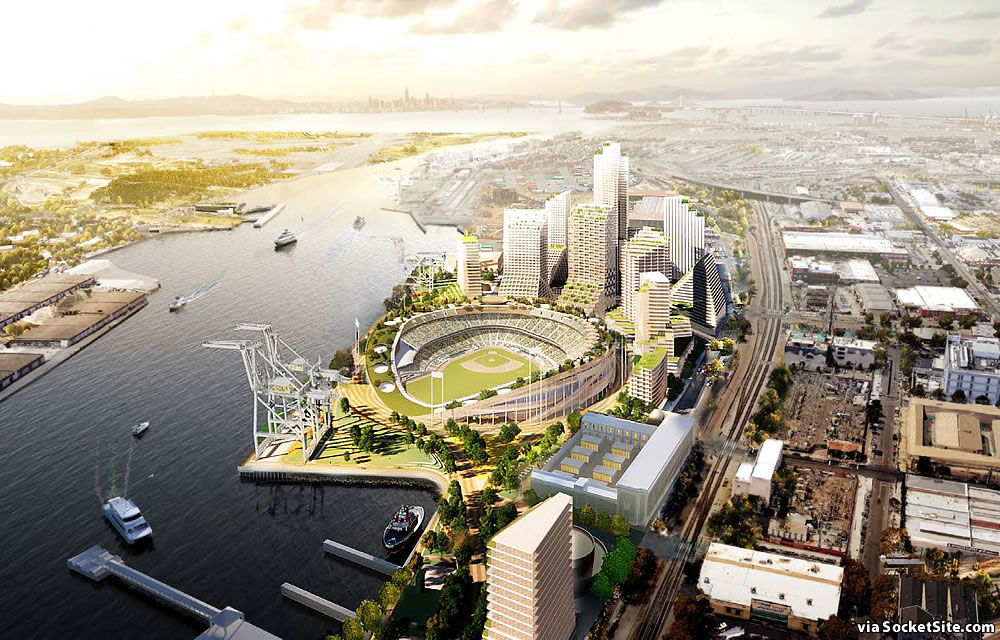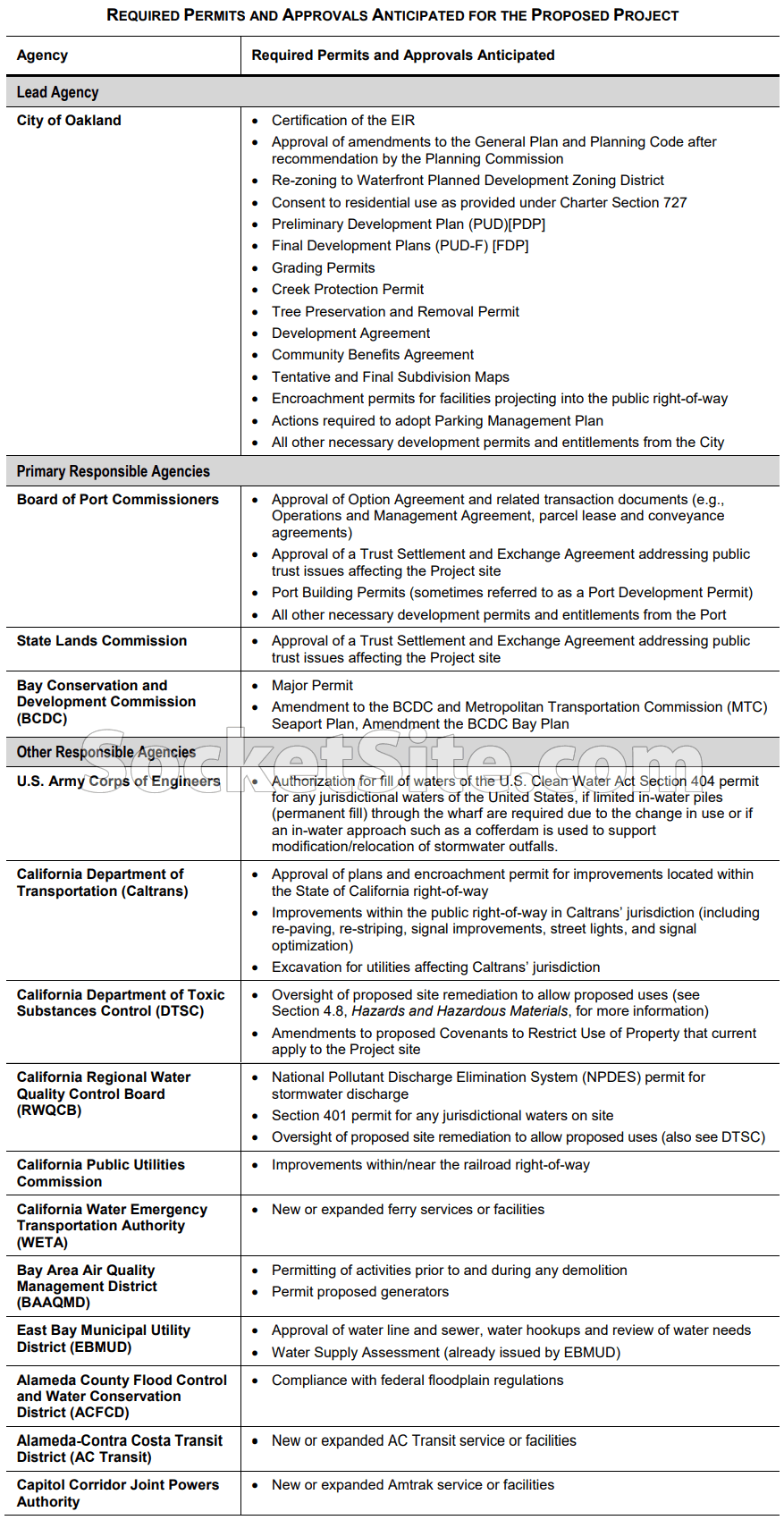Having received, cataloged and reviewed over 400 comments on the Draft Environmental Impact Report (DEIR) for the Oakland A’s proposed stadium, residential and commercial development to rise on the 50-acre-plus Howard Terminal site, Oakland’s Planning Department has released its responses to the aforementioned comments, both individually and in summary form.
Nine of the most common comments and areas of concern for which Planning prepared consolidated responses include:
1. Port Operations and Land Use Compatibility;
2. Rail Safety, Grade Crossing, and Grade Separation;
3. Parking and Traffic;
4. An Off-Site (Coliseum Area) Alternative;
5. Gentrification and Indirect Housing Displacement;
6. Remediation Plans, Land Use Covenants, and Human Health and Ecological Risk Assessments;
7. Effects of Light and Glare on Maritime Operations and Safety;
8. BART Station Capacity and AC Transit Congestion Impacts; and yes,
9. Bird Impacts from Fireworks Displays
And having determined that none of the comments resulted in the identification or addition of any “significant new information” to the report, with respect to “the adequacy of the analysis in the Draft EIR or to other aspects pertinent to the potential effects of the Project on the environment,” the Draft report was finalized and published with edits for further clarification.
Oakland’s Planning Commission is now slated to conduct a public hearing on the Final EIR on January 19, 2022. And if the Commission determines that the EIR was “completed in compliance with State law, represents the independent analysis of the City, and provides adequate information to decision-makers and the public on the potential adverse environmental effects of the proposed Project, as well as ways in which those effects might be mitigated or avoided,” the report will then be passed to Oakland’s City Council for certification. But keep in mind that there are a few other steps to be taken, and pitches to be thrown, before the development as proposed could be approved and actually break ground:
We’ll keep you posted and plugged-in.
Editor’s Note: In addition to having hobbled our ability to publish over the past couple of days, a caching glitch appears to have expeditiously directed a number of readers’ comments directly into a black hole. Our apologies to those who commented in vain. And now on with The Show…
UPDATE (1/20/22): Having determined that the EIR was “completed in compliance with State law, represents the independent analysis of the City, and provides adequate information to decision-makers and the public on the potential adverse environmental effects of the proposed Project, as well as ways in which those effects might be mitigated or avoided,” Oakland’s Planning Commission has passed the EIR to Oakland’s City Council for certification.


UPDATE: Having determined that the EIR was “completed in compliance with State law, represents the independent analysis of the City, and provides adequate information to decision-makers and the public on the potential adverse environmental effects of the proposed Project, as well as ways in which those effects might be mitigated or avoided,” Oakland’s Planning Commission has passed the EIR to Oakland’s City Council for certification.
But once again, as outlined above, there are a few other steps to be taken, and pitches to be thrown, before the development as proposed could be approved or actually break ground, assuming the EIR is certified.
UPDATE: Oakland A’s East Bay Ballpark Deal and Development Is Dead